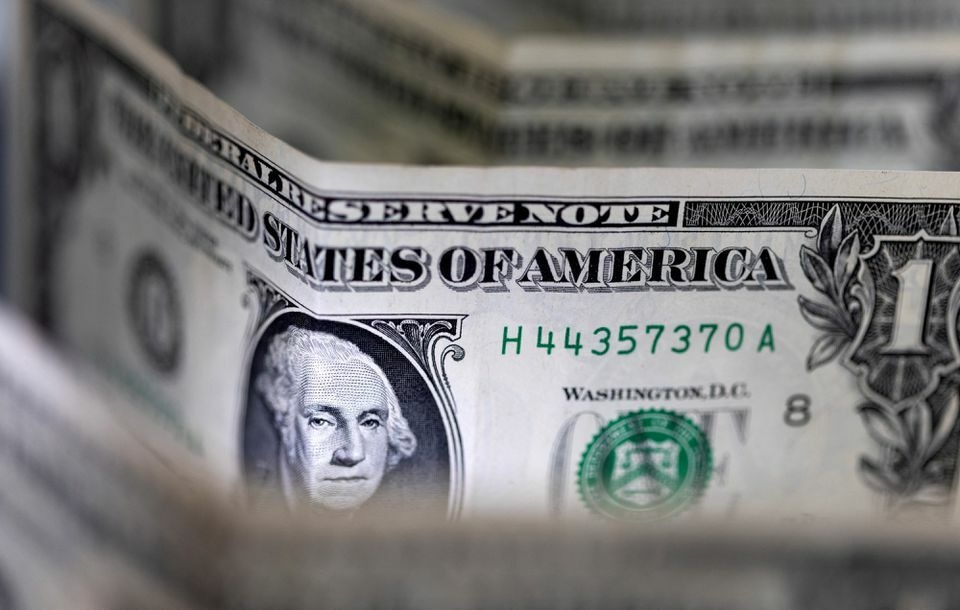As Pakistan reels from dollar shortage, customers lured towards 'grey' market premiums
- Inter-bank and open-market rates have only become wider in recent days
Pakistan’s currency market continued to stay engulfed in a massive dollar shortage, as customers struggled to get their hands on the greenback, confirmed a number of exchange companies to Business Recorder on Friday.
“Dollars are not available in the market as the economic situation remains vulnerable, while foreign exchange reserves remain low,” said a currency exchange dealer.
Pakistan: where formal channels suffer, and 'grey' markets prosper
However, there is no shortage of other currencies, Business Recorder found, as UAE dirhams, Euros, and Saudi Riyals remained readily available at the counters of various Exchange Companies (ECs).
One currency exchange dealer said banks are not providing them with US dollars.
Meanwhile, customers seeking what has turned into a valuable commodity from the open-market need to provide documentation – CNIC, visa, passport, air ticket – to prove their 'genuine' need for foreign currency.
The shortage comes at a time when the rupee, according to the State Bank of Pakistan (SBP), has remained largely stable in the inter-bank market, hovering around Rs224-225 for almost a week. In the open market, Exchange Companies Association of Pakistan (ECAP) quoted rates to be Rs 231.70 (buying) and Rs 234 (selling).
The spread, which at times of stability hovers between Rs1-3, has now reached Rs7-9, according to official data.
However, there is another simultaneous prevalence of an 'informal' or 'grey market', where actual transactions are taking place.
A market analyst, on condition of anonymity, also said rates being 'quoted' even in the open market vary significantly from the rates being actually offered.
At the same time, the US dollar is reportedly being traded at Rs250 in the 'grey' market.
“The shortage of US dollars has been the case for quite some time,” Arsalan Siddiqui, Head of Research at Optimus Research, told Business Recorder.
The analyst said the spread between the inter-bank and open market has also widened because of the shortage.
“The smuggling of dollars to neighbouring countries remains rampant, leading to a high leakage,” he said.
Earlier, Federal Finance Minister Senator Mohammad Ishaq Dar admitted dollars are being smuggled out of Pakistan on a huge scale via neighbouring countries.
“You are buying coal from a neighbouring country in rupees, and these rupees come back to Peshawar. Then they are converted to US dollars at a premium of Rs15-20. These things must be checked,” Dar said.
In recent months, the SBP has increased vigilance on transactions that result in an outflow of foreign currency. It imposed an annual, per-user limit of $30,000 for credit/ debit card transactions, and also restricted the foreign currency threshold for travellers (aged 18 and above) at $5,000 per visit.
In the case of travellers under the age of 18, the limit per visit has been set at $2,500. Additionally, from the calendar year 2023, the annual ceiling to take out foreign currency from the country for adults and minors has been set at $30,000 and $15,000, respectively.
However, experts believe that these measures remain ineffective.
“Pakistan’s external risk remains very high, as reserves have fallen to a 4-year low. The rupee needs to fall in order to reduce the existing spread — this would direct customers back towards the formal channels,” said Siddiqui.
“Moreover, stringent border control measures need to be implemented to curb smuggling,” he said.
The SBP-held foreign exchange reserves dropped to their lowest level since January 2019, and barely enough to cover 1.5 months of imports.
Mustafa Pasha, Chief Investment Officer at Lakson Investments Limited, said the inter-bank PKR/USD rate is being controlled tightly in the hope that flows from bilateral/multilateral sources materialise in time to narrow the 10%+ spread.
“Until then, administrative measures/import controls will remain while exports/remittances will be negatively affected because of the differential,” he told Business Recorder via message.
Pasha was of the view that the recent decline in the USD index and commodities will give the PKR/external account some respite. “However, import compression seems to have reached its limit,” he said.
Pakistan is currently in the midst of a financial crunch with policymakers running from pillar to post to secure additional funds for a country reeling from flood disaster. Authorities in Islamabad and the International Monetary Fund (IMF) are also engaged in discussions over the 9th review of the Extended Fund Facility.
The South Asian country is also seeking financial help from Saudi Arabia which will include doubling the current deferred oil payment facility given by Riyadh to $2.4 billion per year.
Also read:


























Comments
Comments are closed.